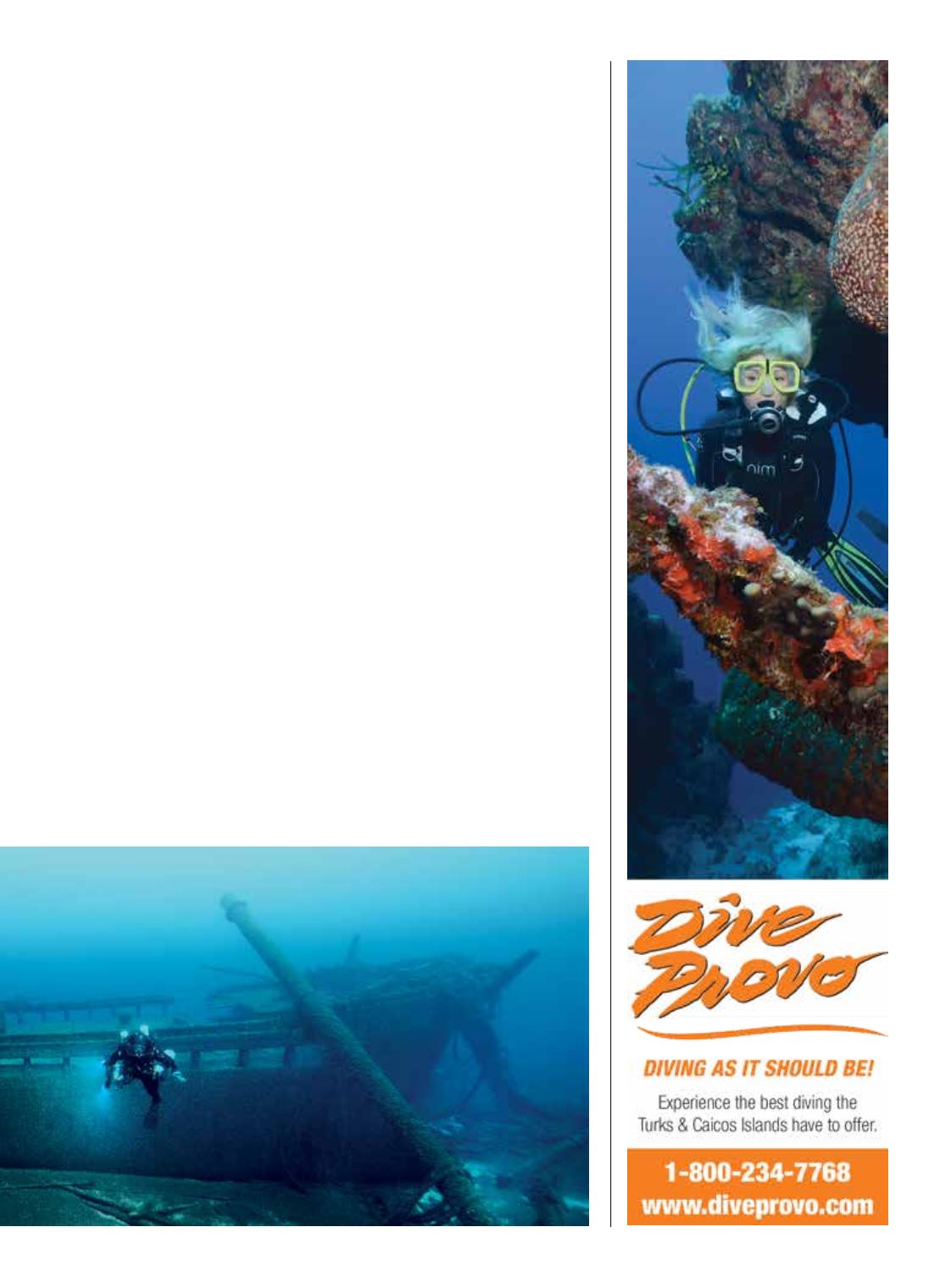
 ALERTDIVER.COM
ALERTDIVER.COM
|
39
one of the most visited wrecks in
the area. The ship was lost Oct. 14,
1954, in a collision with Sinclair
Oil Co.’s barge
Sinclair No. 12
,
which was being towed by the tug
Sinclair Chicago
. It foundered in 45
to 90 feet of water three miles east
of Milwaukee. The Coast Guard
rescued the crew of 30, but the ship
went down with a cargo of TVs,
automobile parts, machine parts,
printing presses, instruments and
animal hides. Several attempts were
made to raise the
Prins Willem V
,
but all failed. The wreck lies
intact on its side and has large
open hatches, several masts and
machinery to observe. Many barrels
that were abandoned after a salvage
attempt remain inside the hold.
GRACE A. CHANNON
The wreck of the
Grace A. Channon
lies in technical-diving depths. This
three-masted wooden schooner was
built in 1873 and lost in a collision
Aug. 2, 1877. It was en route from
Chicago, Ill., to Buffalo, N.Y., with
a cargo of coal when the steam
barge
Favorite
struck its side. The
crew of six sailors along with three
passengers escaped to the schooner’s
workboat and were picked up by
the
Favorite
. Alexander Graham,
the 7-year-old son of the schooner’s
co-owner, was the only person killed
in the disaster. The ship now sits
upright in 180 to 200 feet of water
with its masts unstepped. It’s only
140 feet long, so it’s easy to swim
around in a single dive.
The ship features rare diagonal
outer-hull planking on its transom.
Damage from the collision can be
seen in the form of a big gash on
the port side that’s largely below
the ship’s original waterline. Many
intricate carvings on the wooden
stem post and along the bow are
kept free of mussels by divers. The
clear water means ample ambient
light at depth, and visibility can
exceed 100 feet. This visibility
and the incredible degree of
preservation on this 143-year-old
wooden schooner make for excellent
photographic opportunities.
There are hundreds of wrecks in
the area, each with its own story
of how it ended up frozen in time
at the bottom of Lake Michigan.
These truly incredible wrecks allow
glimpses of American history and
Great Lakes shipping. There are still
missing ships, and with advances
in diving, sidescan technology and
remotely operated vehicles, a few
new wrecks are found each year.
Lake Michigan diving entails rich
history, gorgeous shipwrecks and so
many sites as to keep underwater
explorers busy for years.
AD
















